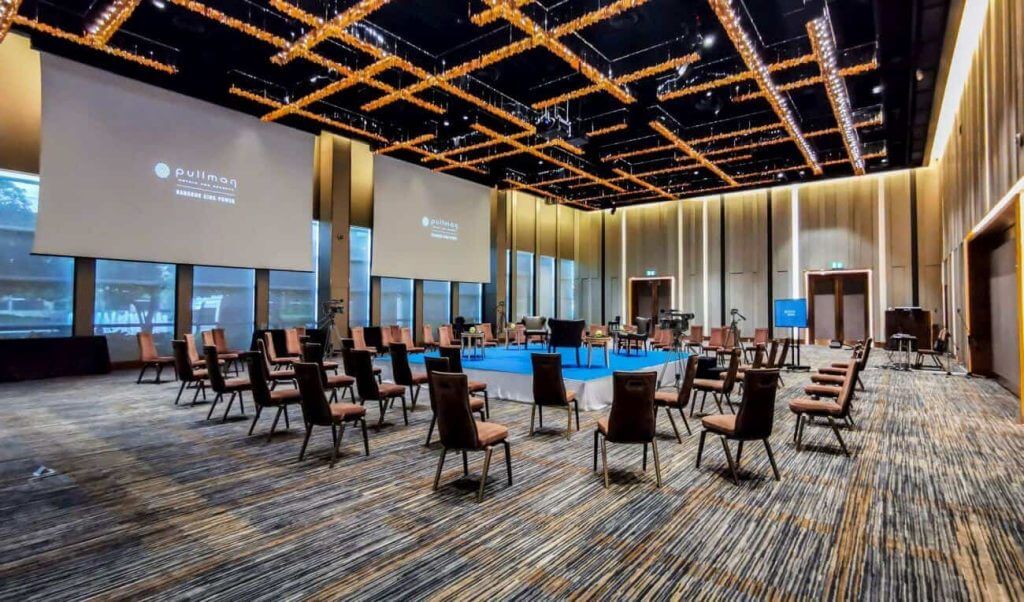
The meeting and wedding planning industries have been rocked during the Covid-19 pandemic, and they may continue to feel the effects for years to come. While online alternatives like Zoom will put a dent into the events business, many hotels are staying laser-focused on recovery even if the path forward presents unusual challenges.
Over the past several months, hotels have proven they can conduct successful conferences and weddings while navigating local (and oft-changing) coronavirus safety guidelines.
David Sacco, director of event management for Gaylord Rockies Resort & Convention Center near Denver, says there’s pent-up demand, and Gaylord properties have already hosted several events from two dozen to 2,000 attendees safely and effectively.
All major hospitality brands have detailed health and safety protocols for their hotels, many of them branded like Hyatt’s Global Care & Cleanliness Commitment, Marriott’s Commitment to Clean, and Hilton’s CleanStay.
Ever-creative hoteliers are taking things beyond the expected social distancing and mask requirements, however. They are finding smart and creative ways to help people gather, and many of them just may surprise you.
Some may prove so popular that they stick around for years to come. Here’s how hotels are reinventing meetings, social functions, and weddings during Covid-19.
Subscribe to our weekly newsletter and stay up to date
Weddings and meetings are back, but different
Wedding events are big business although, these days, they look a bit different. Most have been rescheduled with a reduced head count and reorganized dining rooms and dance floors. Corporate and social functions are seeing changes, too, to keep guests from getting within six feet without a face covering.
At the start of any function at the Hyatt Regency Green Bay, the meeting planner or DJ reads a message from the hotel about the face covering requirement when social distancing cannot be observed, including on the dance floor.
Fairmont Austin recently hosted a succesful bio-tech conference with assigned seating that grouped people based on common interests for improved networking. Assigned seats also kept people from using multiple seats and tables throughout the event.




